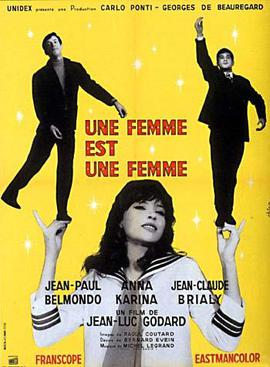Research Report: Jean-Luc Godard
In 1959, Godard completed his first feature film Breathless. Instead of being a burden to his self-expression, the rich film experience of the critic led to a film revolution. The young men and women in Godard's film are caught up in love, but they are scattered, wandering, and even a bit aimless. Breathless brings to the New Wave of French cinema the jump cut, the most Godardian, classic and controversial language of cinema - the abrupt grouping of two fractured shots without changing the orientation of the shot, by removing a part of the linked action, making the film often jump from one scene to another.
The film often jumps from one scene to another without any prior hint. Godard tried to justify his rebellion with the famous slogan "Cinema is reality in 24 frames per second". In his view, classic Hollywood films created a false screen world that separated art from life, and when social reality had become incoherent, screen stories with clever plots and elaborate endings were simply bizarre and absurd.
In fact, before the May Storm of 1968, when French political thought and social structure were undergoing intense turmoil and division, "Breathless" was clearly not intended to be a revolutionary film per se, but in a way, with this film alone, Godard's ideal of "liberating the people" through cinema was first achieved.
But in a way, with this film alone, Godard's ideal of using cinema to "liberate the people" was a success, as the French writer Louis Aragon once exclaimed for Godard and his films: "Today's art is the art of Jean-Luc Godard, because no one but Godard can better depict a chaotic society." Soon Godard had his eye on a girl in a painting for a L'Oreal and Colgate ad. By telegram, he called the girl into his office, where he told her he had a small part for her, but only if she took off her clothes first, which she refused and slammed the door. But Godard felt that he really fell in love with this girl.
So a few months later, the girl named Anna Karina received another telegram from Godard, this time he really had a script ready and it was a political film. "But I don't know anything about politics." Karina said worriedly, "Do I have to take off my clothes?" "Not at all!" The political film that didn't have to take off its clothes was The Little Soldier, which followed the detective story structure of Exhaustion, but uncovered the scars of the Algerian War, the most painful political event in the entire French intelligentsia at the time. Godard's film is also unambiguously political, using only two bedroom scenes to fully and thoroughly explain the anarchist political concept between the "left" and "right". Because of the extremely sensitive Algerian issue, "Little Soldier" was banned for four years, but Godard has fully demonstrated his genius-like creativity and control.
On the set of "Little Soldier", in front of Karina's boyfriend, Godard snatched the girl by slipping a note. Karina then became Godard's first wife and a representative of the French New Wave. After "The Little Soldier" (1960), "A Woman is a Woman" (1961) and "As You Like It" (1962) have created classic images of women in French cinema.
His masterpiece "Breatheless" is one of the pioneering films of the French New Wave and a benchmark for small-budget filmmaking. François Truffaut helped to raise money for him, which was only one-third of the cost of a normal movie, and the casting of Jean Cibot as the female lead cost another one-sixth. Without the money to set the scene, he used the streets of Paris as a natural backdrop. He streamlined the film crew again and again, with only cinematographer Raoul Coutard and an assistant, directly into the crowd on the Champs Elysees. The costumes also do not spend a lot of money to buy, go to find second-hand culture shirt, in line with the setting of young people shy, while wearing the same hat also became a romantic two. At that time, Hollywood popular real-time recording, Godard put the sound part to post to do, in fact, to save money, but also to make the ambient sound and soundtrack become more eloquent.
Cinematographer Raoul Coutard also spliced cheap but high-sensitivity 35mm film into large-size film for the camera, saving on artificial lighting and reducing film costs. Godard used to conceptualize everything before shooting, and lead the staff to shoot enough material precisely and quickly to leave work as early as possible. Without inspiration, he declared a holiday and never wasted film.
On average, the negative of a film is ten times that of the finished film, but Godard only spent three times the negative, and "Exhaustion" was shot in 21 days, with a vacation in between!
• The film is a means of documenting the times, and images are preserved because one can find traces of the existence of the times in these images.
• Bergman goes on to dissect himself
• The reason why Varda was recognized by the cinema club at that time was that she recorded the unique thinking and narrative style of France and cinema at that time with her unique style.



Comments
Post a Comment